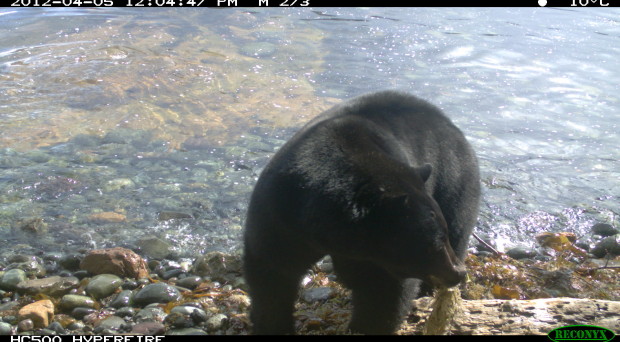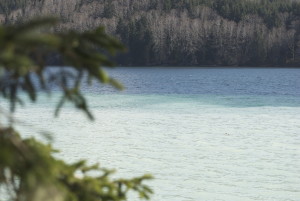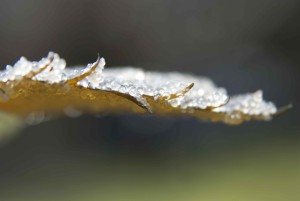
Pacific herring, a small silvery forage fish, have often profound ecological, cultural, and economic importance in the coastal ecosystems in which they occur. From their beginnings as eggs scattered along shorelines, to schools of lipid-rich adults, Pacific herring are a crucial prey species and a cornerstone of many Pacific coast food webs.
The Pacific herring and the aquatic ecosystem
As Pacific herring are a mid-trophic level fish, Pacific herring connect the bottom of the food web to a diversity of upper-trophic level predators, including humpback whales, Pacific salmon, seabirds and other fish eaters.
Their spawn events, which occur at locations dotted along Pacific coastline from California to Alaska and beyond, represent one of nature’s most spectacular events. At spawn events, fast moving schools of herring aggregate against the shoreline, females lay thousands of eggs in dense layers along the blades of kelp, eelgrass and other substrates while males release milt (sperm), which turns the water chalk white.
These spawn events also attract a large diversity of marine predators, including grey and humpback whales, seals, sea lions, sea otters and a large diversity of marine birds that gather to feed on the herring and their eggs.
But what of terrestrial ecosystems? Although the scientific literature is relatively replete with evidence regarding the aggregations of marine predators at herring spawn events, there is an absence of information regarding potential linkages with terrestrial ecosystems and taxa.
But what about the terrestrial ecosystem?
Before we began field research into the connections between Pacific herring and terrestrial ecosystems, we sought out information regarding terrestrial predators and scavengers consuming herring eggs from local and traditional knowledge holders, including fishermen, divers, herring biologists and others.
We also relied on our own understanding and experiences in addition to evidence from the scientific literature relating to marine-terrestrial interactions involving salmon and relatives of herring that return to fresh water to spawn.
As mobile, opportunistic and often abundant animals in coastal ecosystems, black bears were quickly flagged as likely candidates for potential interactions with herring spawn. Along with grizzlies, black bears are widely recognized as dominant predators of salmon. Coastal black bears also routinely forage in intertidal zones and interact with a range of other taxa, including other spawning fishes.
For bears and other terrestrial species living near herring spawns, herring spawn events would offer easy access to valuable lipids and proteins. Moreover, because the majority of herring in British Columbia spawn in early spring, spawn events occur at a time when alternative resources for bears are somewhat limited.
Waiting on the beaches of Quatsino Sound

As part of my PhD research undertaken with Dr. Tom Reimchen at the University of Victoria, and Dr. Paul Paquet at Raincoast Conservation Foundation and University of Victoria, we laid in wait on the beaches of Quatsino Sound, located near the northern tip of Vancouver Island, in the traditional territory of Quatsino First Nation.
Arriving in early March each year, the snow was often down to the shoreline and the black bears still in their winter dens. We’d set up remote cameras across beaches in the region and began to wait. Alongside our remote cabin, a three generation-family of herring fishermen similarly waited for the spawn to begin.
Usually the days before the spawn are what the fishermen call ‘herring weather’ – sunny, blue sky days interspersed with bursts of hail. Every year however, the spawn event itself unfolded differently.
Sometimes the herring would fill the bays before the spawn began, with their presence announced by bubbles that covered the water’s surface. In another year, they’d moved in after darkness and I found them the next morning, spawning against the shore in hurricane-force conditions.
In Quatsino, active spawning usually lasts for about five days or so. Depending on the year and the timing of the spawn, black bears tended to emerge not long after. Following months in their dens, the bears were sluggish and many were thin. Often it was the large males that visited the beaches first.
Unlike spawning salmon, where exertion and skill is often needed to chase and successfully capture the fish, the windrows of herring eggs that wash up into the high intertidal and supratidal zones are readily accessible to black bears. Emerging from the forest, black bears commonly sat or laid down in the piles of herring eggs and washed up seaweeds, ate their fill and then returned to the relative safety of the woods.
How do black bears respond to spawn events?
To study this interaction between black bears and Pacific herring, we used non-invasive approaches. By relying on remote cameras positioned on spawn and spawn-free beaches, we documented that black bears responded positively to spawn events, with bears being more frequent at spawn beaches with larger quantities of eggs.
During searches of bear trails and along the beaches, we collected bear faeces. The analysis of which revealed corroborating evidence; bears consumed greater quantities of eggs at beaches with larger spawns.

Although it takes just a few days for the adult herring to spawn, the eggs are left to ripen for two to three weeks before hatching. Initially, we thought that herring spawn events might offer bears a relatively short and discrete food source, but large numbers of eggs fail to hatch. In Quatsino Sound, drifts of eggs are left stranded and rotting on the beaches, with black bears observed eating eggs and egg slime for weeks following the hatching period.
Implications of Bear-Herring Interactions
Our research links black bears and Pacific herring, two relatively conspicuous species that play substantive roles in coastal ecosystems but which have not been previously linked. As the first scientific evidence of bear-herring interactions, it’s difficult to speculate on the full range of ecological implications.
However, black bear distribution has declined in North America and Pacific herring were more abundant and their spawn events more widespread both in the recent past and prior to the onset of commercial extraction. As such, bear-herring interactions were potentially stronger and more widespread historically.
More broadly, these novel bear-herring interactions highlight the importance of scientific knowledge regarding species and ecosystem interactions, in addition to the lack of information regarding their possible decline.
One Comment